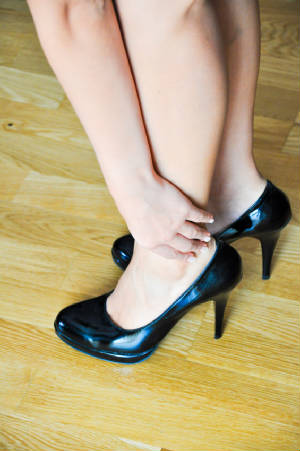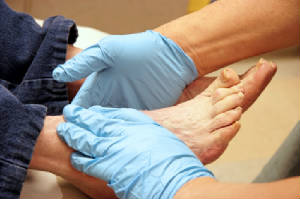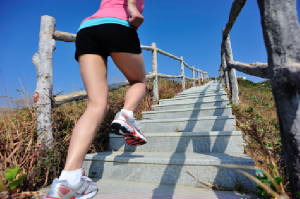|
Tuesday, May 27, 2014
Fashion May Be Detrimental to Your Health Fashionable footwear is the start of the road towards poor podiatric health. According to WRIC Newsroom, "I adore shoes," says 17-year-old Alaini Smoot as she browses in Saxon Shoes in Short Pump. Smoot estimates she
owns more shoes than she can count on her two hands. "Every shoe I go for is going to be fun and cute." Saxon Shoes
President Gary Weiner says "When they like something, they really want it. Sometimes size goes out the window."
Unfortunately, size may come out the window, but that’s when foot complications such as pain and bunions come
in. High heels are not so high and mighty for your health. If you have foot or ankle complications from wearing heels,
see podiatrist Dr. Karin Johansson, DPM of New York. Dr. Johansson can treat your foot and ankle needs. Wearing High Heels and How it Affects Feet
High heels affect what parts of the body? · Joints in the Ankle
·
Balls of the Feet ·
Achilles Tendon ·
Knees – heels cause the knees to bend constantly, creating stress on them · Back – they decrease
the spine’s ability to absorb shock, which may lead to back pain. Also, the vertebrae of the lower back may compress.
What problems can arise from long term use of high heels? ·
Calluses ·
Corns ·
Morton’s Neuroma ·
Plantar Fasciitis ·
Bunions ·
Hammertoe How can I maintain my foot health and still wear high
heels? For more information on maintaining proper foot health while wearing
high heels, visit our link at the bottom. If
you have any questions, please contact our office located in New York, NY. We offer the newest diagnostic and treatment technologies for all your foot care needs. Read
more about the Effects of High Heels on the Feet
Tuesday, May 20, 2014
New Device Could Detect Neuropathy in Diabetics  A new device may allow Diabetic patients to detect nerve damage of the feet by detecting sweat. A stick-on pad color changes from blue to pink when the feet
are in good health. However, the color does not change if there are any potential nerve complications, according to Roger
Dobson of DailyMail. A new device may allow Diabetic patients to detect nerve damage of the feet by detecting sweat. A stick-on pad color changes from blue to pink when the feet
are in good health. However, the color does not change if there are any potential nerve complications, according to Roger
Dobson of DailyMail. A new study at the
Oxford University examined the results of about 3,000 subjects, finding the device to be 86 percent accurate according to
DailyMail. “This is an exciting innovation. In association with a yearly foot screen and referral to the podiatry services,
this will reduce the risk of amputations, Stella Vig, chair of the Lond Diabetic Foot Network said. “At present, up
to 50 per cent of amputations may be preventable - no patient should ignore their feet.” Diabetics need podiatric care. If you are diabetic, see podiatrist Dr. Karin Johansson, DPM of New York. Dr. Johansson will treat your foot and ankle needs. Diabetic Foot Care
Diabetes affects millions of people
of all ages each year. Diabetes damages blood vessels in many parts of the body, including the feet. When damage occurs to
nerves in the feet, they may be unable to send the proper signals to the peripheral nervous system, resulting in a condition
known as neuropathy. Once a diabetic patient develops neuropathy, it is imperative that the feet are well taken care of to
avoid possible amputation of the feet.
The Importance of Caring for Your Feet
- Regularly check your feet for bruises or sores.
- Wear socks that fit your feet; socks shouldn’t
be tight.
- Wear properly fitting shoes that are comfortable.
Patients with diabetes should have their
doctor monitor their Hemoglobin A1C levels as this test lets the physician know how well the blood sugar levels have been
controlled during the past 3 months. It is important to keep the blood sugar levels in a normal range (70-110mg/dl). It is
advisable to visit a podiatrist if the diabetic patient is experiencing any conditions involving the feet.
For more information about Diabetic Foot
Care, follow the link below. If
you have any questions, please contact our office located in New York, NY. We offer the newest diagnostic and treatment technologies for all your foot care needs.
Read more about Diabetic Foot Care
Monday, May 12, 2014
Pedicures and Podiatric Visits Benefit the Elderly According to licensed massage therapist Theresa George, pedicures and podiatry visits help keep the feet healthy. Healthy habits keep the feet feeling fabulous and healthy for seniors, who especially need help treating the feet as they age. George states that a simple foot massage helps seniors
with stress reduction and relaxation. "Many seniors can't see their feet
as well as they used to and pedicures give us the chance to look for problems like broken toes, cracked, bleeding skin, thickening
of toenails, ingrown toenails and nail fungus," said Salon PS district manager Julie Defelice. "If we catch a fungus
quickly it can be treated." For the elderly, foot care is crucial. If
you need foot care, see podiatrist Dr. Karin Johansson, DPM of New York. Dr. Johansson will treat your podiatric needs. The Elderly and their
Feet As we age we start to notice
many changes in our body, but the elder population may not notice them right away. Medical conditions may prevent the
elderly to take notice of their foot health right away. Poor vision is a lead contributor to not taking action for the elderly.
Common Conditions
Neuropathy – can reduce feeling in the feet, and
can hide many life threating medical conditions. Reduced
flexibility – prevents the ability of proper toenail trimming, and foot cleaning. If left untreated, it may lead to
further medical issues. Foot sores –
amongst the older population can be serious before they are discovered. Some of the problematic conditions they may face are: - Gouging toenails affecting nearby toe
- Shoes that don’t fit properly
- Pressure sores
- Loss of circulation in legs & feet
- Edema
& swelling of feet and ankles
- Injuries left unnoticed
Insect or pet bites can also become inflamed and infected Stepping on sharp objects, without notice can increase pain Susceptible Infections Diabetes and poor circulation can cause general loss of sensitivity over the years, turning
a simple cut into a serious issue. Bacteria-
feet which are exposed to floors that have moist environments like pools and spas are prone to bacteria. These areas can contribute
to foot funguses and other diseases. For more
information about the Elderly and their Feet, read the following article. If you have any questions, please contact our office located in New York, NY. We offer the newest diagnostic and treatment technologies for all your foot care needs. Read more about the Elderly and their Feet
Tuesday, May 6, 2014
2:06 pm edt
Spring the Season for Running Injuries  According to Google, runners are more likely to sustain an injury during the spring season. Specifically, the
most common running injury tends to be a lower leg complication known as shin splints. Many doctors state that they usually see a rise in patients coming to see them
with shin splints and other lower extremity injuries during spring’s earlier weeks. “When the weather starts to
get nice, people get excited and start running again, and they just haven't been doing it for a while,” said Dr. Matthew
Silvis, a family and sports medicine physician at Penn State Hershey Medical Center. Running injuries can happen to just about anyone. If you injured your foot or ankle, consider seeing podiatrist Dr. Karin Johansson, DPM of New York. Dr. Johansson will treat your foot and ankle injuries. How to Prevent Running
Injuries Many common running injuries
are caused by overuse and overtraining. When the back of the kneecap starts wearing out and starts causing pain in your knee,
this is commonly referred to as runner’s knee. Runner’s knee is a decrease in strength in your quadriceps and
can occur if you’re not wearing properly fitted or supporting shoes. Runner’s knee usually is treated with strengthening
exercises focusing on the quad muscles and sports orthotic. To prevent runner’s knee, focusing on hip strengthening
is a good idea, as well as strengthening your quads to keep the kneecaps aligned. Physical therapy can help you learn the
best exercises to heal runner’s knee.
What Are Some Causes of Running Injuries? - One cause of a common running injury is called iliotibial
band syndrome.
- Plantar fasciitis is also another common injury.
- Stress fractures can occur from overtraining,
lack of calcium, or even your running style.
Best Ways to Prevent Running Injuries
- Wear footwear that
fits properly and suits your running needs.
- Running shoes are the only protective gear that runners have to safeguard
them from injury. For more information about
Running Injuries, follow the link below.
If you have any questions, please contact our office
located in New York, NY. We offer the newest diagnostic and treatment technologies for all your foot care needs. Read more about Running Injuries
|